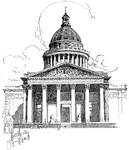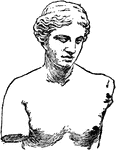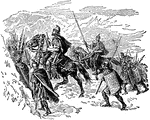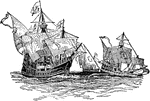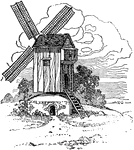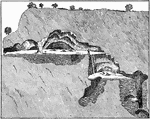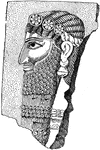Early Egyptian Pictures
"Early Egyptian Pictures. Ploughing, breaking clods, and sowing."—Gordy, 1912

Roman Standards
Staffs carried by Roman legions to show who they were and what rank in the army they held.

Remains of the Viking Ship Gokstad
"Remains of the Viking ships of Gokstad, after its removal from the mound where it was found."—Gordy,…
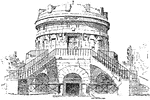
Tomb of Theodoric at Ravenna
An ancient monument built in 520 CE by Theodoric the Great as his future tomb.

St. Martin's Church, Canterbury
"This church occupies the site of a chapel built in the Roman period and standing at the time of the…
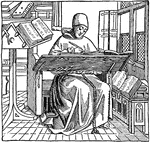
Monk Copyist
"The monks also became copyists, and with great painstaking and industry gathered and multiplied ancient…
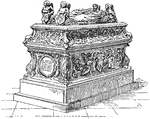
Tomb at Tours of the Children of Charles VIII
"Showing the influence of ancient classical art upon the art of the Renaissance."—Myers, 1905
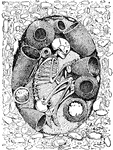
A Prehistoric Egyptian Tomb
"The skeleton lay on the left side with knees drawn up and hands raised to the head. About it were various…

Early Roman Bar Money
"A bar of copper marked with the figure of a bull. Dates from the fourth century B.C."—Webster,…
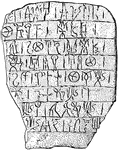
Cretan Writing
"A large tablet with linear script found in the palace at Gnossus, Crete. There are eight lines of writing…

Beginning of Written Language
"Below the pictured hieroglyphics in the first line is the same text in a simpler writing known as hieratic.…

The Moabite Stone
"Found in 1868 at Dîbân, east of the Dead Sea. The monument records the victory of Mesha,…

Stonehenge
An ancient monument located in England, composed of earthworks surrounding a circular setting of large…

Khufu
A Pharaoh of Ancient Egypt. He reigned from 2589 to 2566 BC, and is known for being the builder of the…

Merneptah
The fourth ruler of the Nineteenth Dynasty of Ancient Egypt, reigning from 1213 to 1203 BC.

The Great Pyramid of Giza
"The pyramid when completed had a height of 481 feet. It is now 451 feet high. Its base covers 13 acres.…

The Great Sphinx
"This colossal figure, human-headed and lion-bodied, is hewn from the natural rock. The body is about…
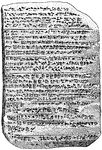
The Amarna Tablet
A series of correspondence on clay tablets between the Egyptian administration and its representatives…

Ramses II Seated
"A black granite statue of the youthful Ramses II. It is probably a faithful portrait. No better work…
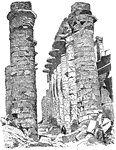
Central Avenue, Hall of Columns, Karnak
"The hall measures 170 feet deep by 329 feet broad. Its roof was supported by a central avenue of 12…
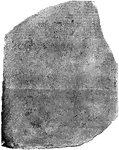
The Rosetta Stone, Front View
A fragment of an Ancient Egyptian text, which provided the key to the modern understanding of Egyptian…

Excavations at Nippur
"Nippur was the ancient 'Calneh in the land of Shinar.' Excavations here were conducted by the University…

The Deluge Tablet
"Contains the narrative of the flood as pieced together and published by George Smith in 1872. There…
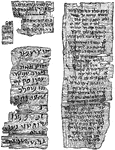
Ancient Hebrew Manuscript
"A papyrus of the first century A.D., containing the Ten Commandments. It was discovered in Egypt."—Webster,…

Rock Temple at Abu-Simbel
"The temple, built by Ramses II on the steep face of a cliff overlooking the Nile, has a facade containing…
An Assyrian Statue
"The king, a rude heroic figure, stands upright before the god. He holds a club in the left hand, in…
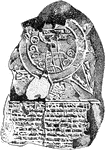
A Babylonian Map of the World
"A tablet of dark brown clay, much injured, dating from the 8th or 7th century B.C. The two large concentric…
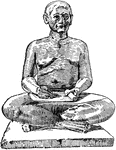
An Egyptian Scribe
A statue of a man who recorded books and/or documents during the era of Ancient Egypt.
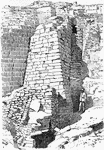
Excavations at Troy
"The great northeast tower of the sixth city. The stairs to the right date from the eighth city."—Webster,…
